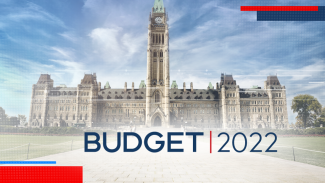
2022 Federal Budget
2022 Federal Budget
On April 7th Canada's finance minister, Chrystia Freeland, tabled the 2022 Federal budget. In this newsletter we will discuss what changes will be introduced moving forward, and some important items that were omitted from the budget. First, what items did they leave out?
Omissions from the Budget
1. No change to the capital gains inclusion rate. Because of the NDP-Liberal co-operation pact, many thought that the capital gains inclusion rate would be increased up to 75%, as the NDP had this proposal in their election platform last year. Alas, this was not included in the budget, and for now, the capital gains inclusion rate will stay at 50%.
2. No change in taxation for T-Series withdrawals. These withdrawals allow investors a tax efficient method of drawing from non-registered investments through return of capital distributions and are an important component of structuring retirement income. This was not included in the budget and these withdrawals remain a viable option to reduce taxation for retirees as they withdraw registered assets.
Included in the Budget
One of the main topics of the 2022 budget was housing, with a number of changes coming.
1. Creation of a Tax-Free First Home Savings Account
We touched on this back in November as a potential result from the election, and now we have the details. This new registered account is expected to become operational for contributions in 2023, with the government working with financial institutions to get this account up and running during 2022. To be eligible to open an account, you must be a Canadian resident at least 18 years old and have not lived in a home you owned during the year the account is opened or during the preceding four calendar years. Once this account is used to fund a down payment on a home, it can never be used again.
Contributions
The contributions to the account are tax deductible, while any income earned in the account is tax free. Annual limits are subject to $8,000 contributions, and any unused contributions WILL NOT be be carried forward. The lifetime limits are capped at $40,000.
Withdrawals
Withdrawals made towards a home would not be taxable, while amounts withdrawn for other purposes would be taxable. To provide flexibility for account holders, if you choose not to purchase a home in Canada with the FHSA, you can transfer those assets into your RRSP/RRIF anytime before age 71 without reducing your individual RRSP room.
As for how this works with the existing Home Buyers' Plan (HBP) in your RRSP, you will not be permitted to use both the FHSA and the HBP for the same qualifying house purchase.
2. Home Buyers' Tax Credit
First time home buyers who purchase a qualifying home currently receive up to $750 in tax relief by claiming the First-Time Home Buyers' Tax Credit (HBTC). Budget 2022 proposes to double the HBTC, which could create up to $1,500 in tax relief for first time home buyers on a qualifying home purchase. This new credit applies to acquisitions of a qualifying property on or after Jan. 1, 2022.
3. Residential Property Flipping Rule
As the Government is concerned over individuals flipping real estate and not claiming it as business income, they are proposing a new deeming rule that would make any property sold within 12 months of purchasing it subject to business income. This means even if the property is your principal residence, it would not be subject to the principal residence exemption, nor would it be considered capital gains for taxation purposes. The full amount of the gain would be included in your taxable income for the year of disposition. The new deeming rule would not apply if the disposition of property is related to one of the life events listed below:
- Death, household addition (birth of a child, adoption, care of elderly parent), separation, personal safety, disability or illness, employment change, insolvency or involuntary disposition.
Other notable tax credits that were introduced were the new Multigenerational Home Renovation Tax Credit, and an increase of the eligible expenses for the Home Accessibility Tax Credit up to $20,000.
4. Critical Mineral Exploration Tax Credit
While the flow-through share regime for oil, gas, and coal activities after Mar. 2023 will be eliminated, there will be a new tax credit created. This new 30% Critical Mineral Exploration Tax Credit (CMETC) will be used for specified minerals that are typically used to produce batteries and permanent magnets, or to produce or process advanced materials, clean technology, or semi-conductors. We believe this new tax credit could actually increase the benefit that investors already get from using flow through shares as a tax deduction.
Of course there are many other items that were touched on in the budget, but these were the ones I thought might be the most interesting. If you want a more detailed and involved list, please reach out and I'd love to pass it along.
Until next month,
Jon

Jonathan Adomait
Financial Advisor | CFP, B.Eng

